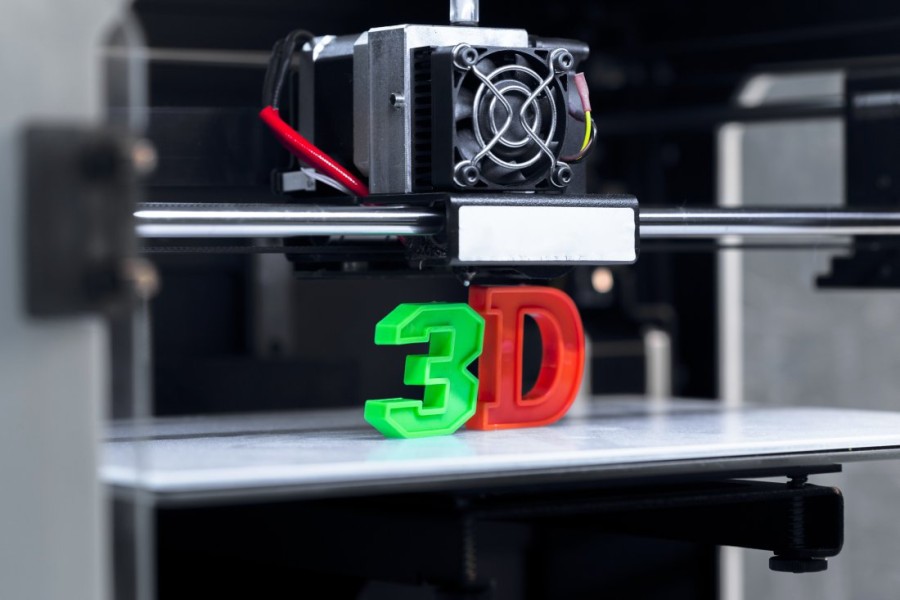Advancements in Additive Manufacturing: Revolutionizing Mechanical Engineering
This article explores the latest advancements in additive manufacturing and their implications for mechanical engineering, covering topics such as materials, multi-functional printing, resolution, scalability, and sustainability.
In the realm of mechanical engineering, additive manufacturing, commonly known as 3D printing, has emerged as a transformative technology with the potential to revolutionize the way we design, prototype, and manufacture components and products. Unlike traditional subtractive manufacturing methods, which involve cutting away material from a solid block, additive manufacturing builds objects layer by layer, offering unprecedented design freedom, reduced material waste, and increased efficiency. In this article, we’ll explore the latest advancements in additive manufacturing and their implications for mechanical engineering.
Diversification of Materials
One of the most significant advancements in additive manufacturing is the diversification of materials available for 3D printing. While early additive manufacturing processes were primarily limited to plastics and polymers, recent innovations have expanded the range of printable materials to include metals, ceramics, composites, and even biomaterials.
Metal additive manufacturing, in particular, has seen remarkable progress, with technologies such as selective laser melting (SLM) and electron beam melting (EBM) enabling the production of complex metal parts with high precision and strength. This opens up new possibilities for applications in aerospace, automotive, medical devices, and beyond, where lightweight, high-performance metal components are in demand.
Multi-Material and Multi-Functional Printing
Another exciting development in additive manufacturing is the ability to print objects with multiple materials or functionalities in a single build. Multi-material printing allows engineers to create composite structures with varying properties, such as stiffness, flexibility, and conductivity, within the same component. This capability is particularly valuable for designing complex mechanical parts that require tailored material properties in different regions.
Furthermore, advancements in multi-functional printing enable the integration of additional functionalities directly into 3D-printed parts. This includes embedding sensors, actuators, and electronics into components during the printing process, eliminating the need for assembly and reducing overall complexity. Applications of multi-functional printing range from smart prosthetics and wearable devices to sensors for structural health monitoring in infrastructure and aerospace.
Improved Resolution and Surface Finish
As additive manufacturing technologies mature, there has been a significant improvement in the resolution and surface finish achievable with 3D printing. High-resolution 3D printers equipped with advanced laser systems and control algorithms can produce intricate geometries and fine details with exceptional precision.
Moreover, post-processing techniques such as polishing, machining, and surface coating further enhance the surface finish and mechanical properties of 3D-printed parts, making them suitable for a wide range of applications, including consumer products, jewelry, and medical implants. These advancements in resolution and surface finish are driving the adoption of additive manufacturing in industries where aesthetics and precision are paramount.
Scalability and Production Integration
While additive manufacturing has traditionally been used for prototyping and small-batch production, recent advancements in scalability and production integration are expanding its potential for mass manufacturing. Large-format 3D printers capable of printing large parts or multiple components in a single build are enabling the production of full-scale prototypes and end-use parts for industries such as automotive, aerospace, and construction.
Furthermore, advancements in automation, robotics, and digital manufacturing technologies are facilitating the seamless integration of additive manufacturing into existing production workflows. This includes the development of automated post-processing systems, in-line quality control measures, and digital twin simulations to optimize manufacturing processes and ensure consistency and reliability in mass production.
Sustainability and Circular Economy
In addition to technological advancements, additive manufacturing is driving progress towards sustainability and the circular economy. Unlike traditional manufacturing methods, which often result in significant material waste due to subtractive processes, additive manufacturing only uses the material required to build the desired object, minimizing waste and energy consumption.
Furthermore, additive manufacturing enables the use of recycled and bio-based materials, reducing the reliance on virgin resources and lowering the environmental impact of production. This aligns with the principles of the circular economy, where materials are kept in use for as long as possible through recycling, remanufacturing, and resource recovery, contributing to a more sustainable and resource-efficient future.
Additive manufacturing has come a long way since its inception, evolving from a prototyping tool to a mainstream manufacturing technology with broad applications across industries. The latest advancements in materials, multi-functional printing, resolution, scalability, and sustainability are driving the adoption of additive manufacturing in mechanical engineering, offering new opportunities for innovation, customization, and efficiency.
As additive manufacturing continues to advance, it will likely reshape the way we design and manufacture products, enabling engineers to push the boundaries of what is possible and create solutions to complex challenges in ways that were previously unimaginable. With ongoing research and development, additive manufacturing is poised to play a central role in the future of mechanical engineering, driving innovation, sustainability, and economic growth.
Source:

